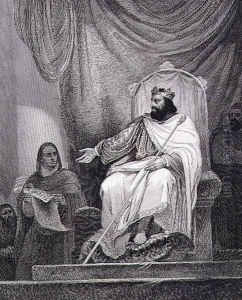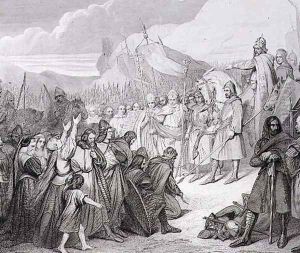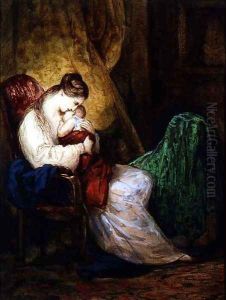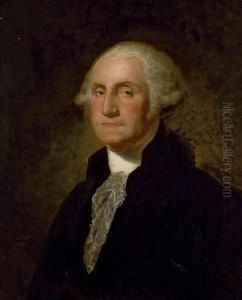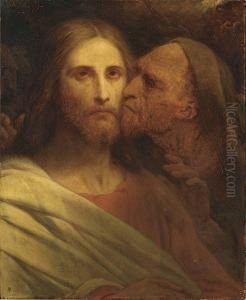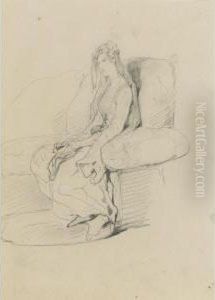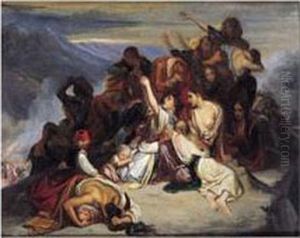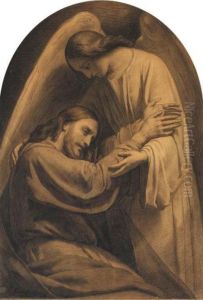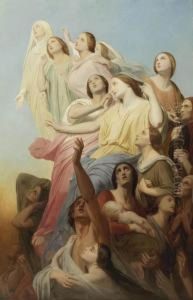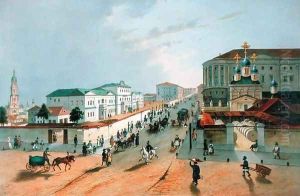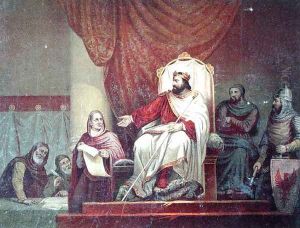





Charlemagne 742-814 Issuing the Capitulary of Herstal in 779, engraved by Eugene Ronjat, c.1860-80
-
About Reproduction
Discover the allure of art with our faithful reproduction of "Charlemagne 742-814 Issuing the Capitulary of Herstal in 779, engraved by Eugene Ronjat, c.1860-80", originally brought to life by the talented Ary Scheffer. Unlike posters or prints, our hand-painted oil painting breathes an unique sense of depth and texture into your space. Every detail, every stroke, and every texture is meticulously recreated, paying the perfect homage to Ary Scheffer and his artistic vision.
Owning this piece is more than just decoration - it's a statement of your refined taste in art. Let the vibrant colors and intricate details of this replica serve as a daily reminder of the beauty in our world. Elevate your decor and appreciate the richness of art with our replica of this masterpiece.
-
Painting Description
"Charlemagne 742-814 Issuing the Capitulary of Herstal in 779" is a historical engraving by Eugene Ronjat, based on the original work by the Dutch-French Romantic painter Ary Scheffer, created around the period of 1860 to 1880. The engraving depicts a significant moment in the reign of Charlemagne, the King of the Franks and later Emperor of the Carolingian Empire, who was a pivotal figure in the shaping of medieval Europe. The scene captures Charlemagne in the act of issuing the Capitulary of Herstal, a set of legislative or administrative edicts that played a crucial role in the governance of his expansive realm.
The Capitulary of Herstal, promulgated in 779, was part of Charlemagne's efforts to consolidate his power and reform the administration of his territories. These capitularies were a series of decrees that addressed a wide range of issues, from the organization of the military to the administration of justice and the management of the royal estates. The issuance of such decrees was a testament to Charlemagne's commitment to the centralization of authority and the establishment of a more uniform system of governance across his empire.
Ary Scheffer, the artist behind the original work that inspired Ronjat's engraving, was known for his historical and literary paintings. Scheffer's works often reflected his interest in the grand narratives of history and the moral complexities of his subjects. The choice to depict Charlemagne at the moment of issuing the Capitulary of Herstal underscores the significance of law and governance in the legacy of the Carolingian ruler.
Eugene Ronjat, the engraver, meticulously reproduced Scheffer's composition, capturing the solemnity and gravity of the historical event. The engraving would have served to disseminate Scheffer's interpretation of Charlemagne's reign to a wider audience, contributing to the 19th-century Romantic fascination with medieval history and its heroes.
The artwork is emblematic of the 19th-century historical revival and the period's interest in the visualization of pivotal moments from the past. It reflects the era's artistic trends, where engravings played a vital role in the popularization of historical and literary themes. As a visual representation of Charlemagne's rule, the engraving not only serves as an artistic endeavor but also as a historical document that offers insight into the perception and valorization of European history during the 19th century.
-
Lead Time & Shipping
When you order this oil painting replica, it typically takes 2-3 weeks to paint. If the artwork is more complex, it might need a little more time to ensure the best quality. Once it's ready, we'll send you a photo for your approval. After you give the green light, we'll ship it to you for free.
-
Return & Refund
We believe in the quality of our hand-painted oil painting reproductions, and your satisfaction is our priority. If for any reason, you are not completely satisfied with your purchase, we offer a 45-day return policy. You can return your artwork within 45 days of receipt and receive a full refund. Please note that the artwork must be returned in the original packaging and in the same condition as it was received.





